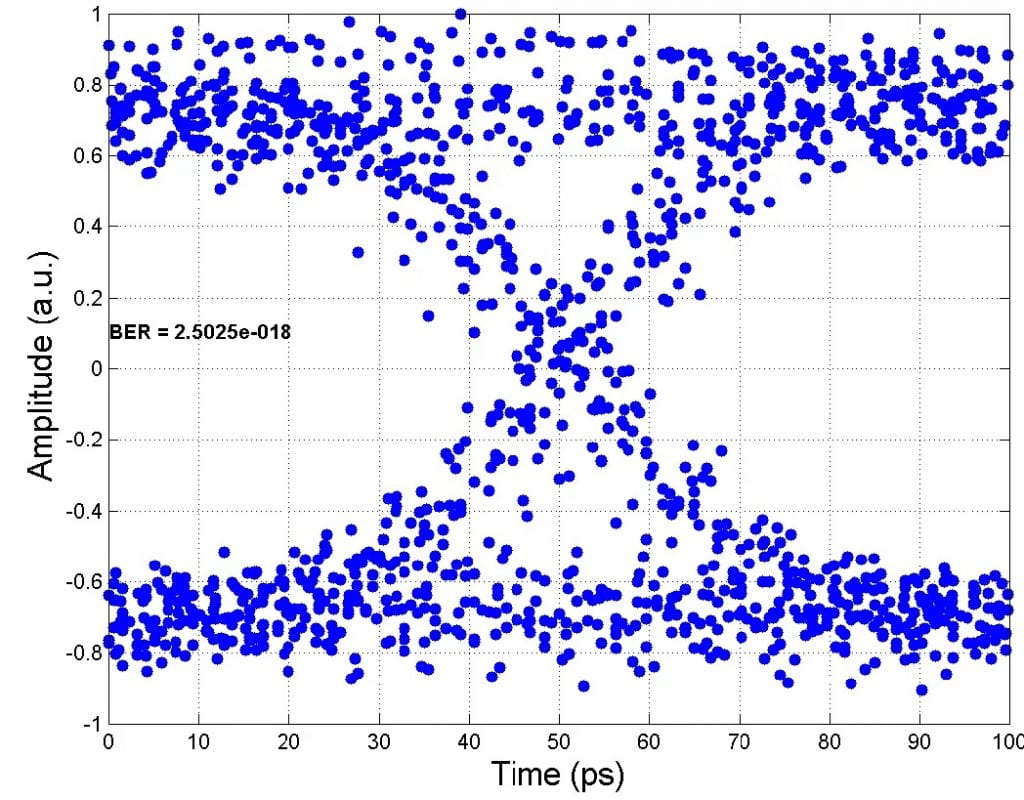
IEEE Global Signal and Information Processing (A PDF file opens in a new tab)
The rapid growth of streaming video and the heterogeneous nature of cloud-based applications place a burden on optical networks that form the internet. To provide a seamless user experience, these networks must be aware of network conditions and be agile in directing traffic. This in turn requires fast and accurate optical performance monitoring at full data rate.
High speed optical performance monitoring has several challenges. It requires analog-to-digital converters (ADC) and digital processors that operate at the ultrahigh data rates of optical networks. Achieving high-speed, low-noise, and low-power ADC is very difficult and digital processors operating at such speeds are power hungry.
To overcome these challenges, the UCLA team (led by Prof. Bahram Jalali and including graduate students Cejo K. Lonappan, Brandon Buckley and Daniel Lam) developed the time-stretch accelerated processor (TiSAP). This system achieves real-time data acquisition and processing at a record 1.2 Tb/s. It employs photonic time-stretch enhanced recorder (TiSER) technology to create an optical “slow-motion” to slow down the fast data so it can be digitized and processed. TiSAP consists of the time-stretch front-end, a custom-developed electronic ADC, a powerful field programmable gate array (FPGA), and an integrated clock and data recovery module. The FPGA digitally recovers the data and generates real-time eye diagrams in-service, unlike a bit error-rate tester (BERT), which is used for out-of-service analytics.
This work was done as part of the NSF funded Engineering Research Center, CIAN (Center for Integrated Access Network) in collaboration with the CIAN Testbed for Optical Aggregation Networking (TOAN) (led by Profs. Dan Kilper and John Wissinger) at the College of Optical Sciences at University of Arizona. The team demonstrated in-service optical performance monitoring of 10 Gbit/s streaming video packets transmitted through a commercial networking platform. Two Fujitsu Flashwave 9500 Optical Network Platform (ONP) nodes, each having 10 Gbit/s On-Off Keying (OOK) modulation-based transponder line cards, were used to stream high definition (HD) video packets. The optical network channel carrying the streaming video packets was analyzed by TiSAP to generate real-time eye diagrams of the data.
Real-time, in-service, optical performance monitoring demonstrated here can be used to provide feedback to the software defined networking (SDN) to implement agile optical networks for automated network restoration, disaster recovery, efficient routing, and bandwidth management.
This work, funded by the National Science Foundation through CIAN ERC grant EEC-0812072Y5001118, was presented at the 2014 IEEE Global Signal and Information Processing. December 20 conference in Atlanta, Georgia on December 3rd, 2014.
